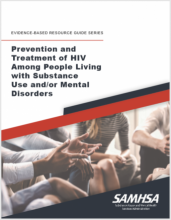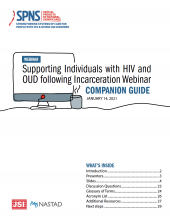
Individuals who have HIV who also use drugs experience increased age-matched morbidity and mortality in comparison with those with HIV who do not use drugs.



Individuals who have HIV who also use drugs experience increased age-matched morbidity and mortality in comparison with those with HIV who do not use drugs.
This PowerPoint slide deck reviews the foundations of harm reduction philosophy and practice, summarizes drug user health issues and trends, and aims to increase cultural competence and humility when working with people who use drugs.
This newly released national strategy confronts the rising rates of opioid and non-opioid related fatal overdoses.
This CDC report provides updated data related to HIV prevalence among people who inject drugs, documenting findings that underscore the need for low-barrier access to comprehensive and integrated needs-based syringe service programs for necessary prevention and
In Los Angeles, New York, Houston, Philadelphia, and Washington, D.C., a National Institutes of Health funded clinical trial, known as INTEGRA, is evaluating the efficacy of delivering integrated HIV and substance use disorder care via mobile clinics.
Transgender people and communities, including nonbinary people, have specific needs within harm reduction programs.
For Boston Health Care for the Homeless nurse Megan Sonderegger, providing client-centered care means literally meeting her clients where they are.
In recent years, the gap in the rate of opioid overdoses among Black and white Americans has narrowed significantly, with increases in Black mortality driven in part by the addition of synthetic opioids to other drugs.
There are so many factors that impact adherence and health outcomes. During this Connecting Care podcast, Drs. Alex Walley, Jessica Taylor, and Sim Kimmel discuss HIV prevention and treatment among people who inject drugs.